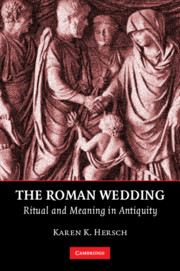Introduction
Published online by Cambridge University Press: 05 June 2012
Summary
Few scholars have offered a better portrait of the difficulties inherent in the study of ritual than the anthropologist Victor Turner, who in 1969 observed of his own work on the rituals of the Ndembu people,
It is true that almost from the beginning of my stay among the Ndembu I had, on invitation, attended the frequent performances of the girls' puberty rites (Nkang'a) and had tried to describe what I had seen as accurately as possible. But it is one thing to observe people performing the stylized gestures and singing the cryptic songs of ritual performances and quite another to reach an adequate understanding of what the words and movements mean to them.
For social historians of the Roman world, Turner's remarks ring especially true, for the problem of determining the meaning behind ancient rituals is compounded by chronological distance from long-dead informants and frustrating gaps in evidence. And in the case of the Roman wedding, we depend almost exclusively on upper-class male authors to reveal the meaning of a ceremony in which a young woman's transition to married life was the primary focus. Did the events of a Roman wedding and the thoughts and feelings of its participants (especially the bride), described by ancient sources, resemble in any way the reality of the ceremony? Even if we sifted through all the known evidence for Roman weddings, collected the elements common to each, and said with relative certainty that these were the rites and rituals of the Roman wedding known to Romans of that historical period, this ceremony – this amalgam wedding – would be our own creation, and not the experience of any one Roman.
- Type
- Chapter
- Information
- The Roman WeddingRitual and Meaning in Antiquity, pp. 1 - 14Publisher: Cambridge University PressPrint publication year: 2010

